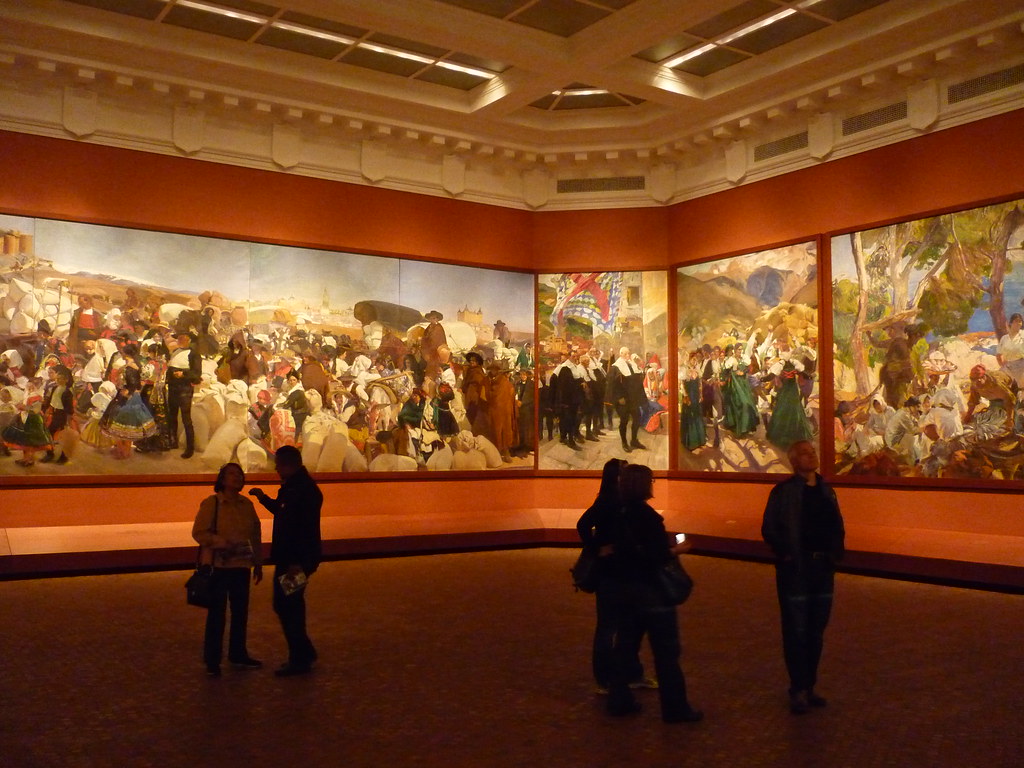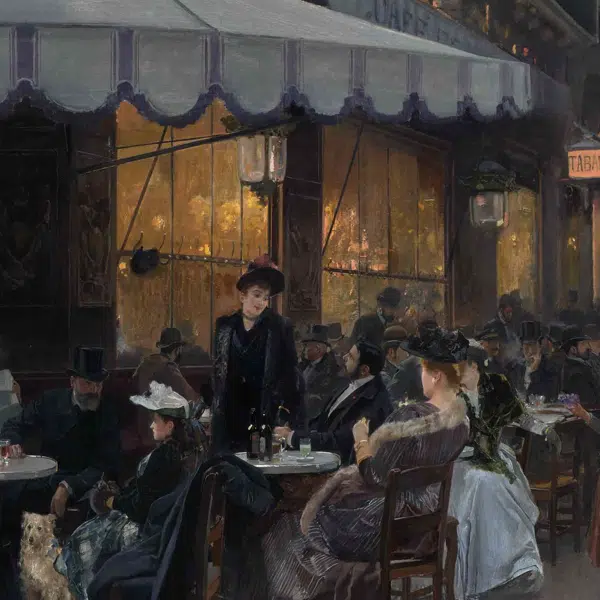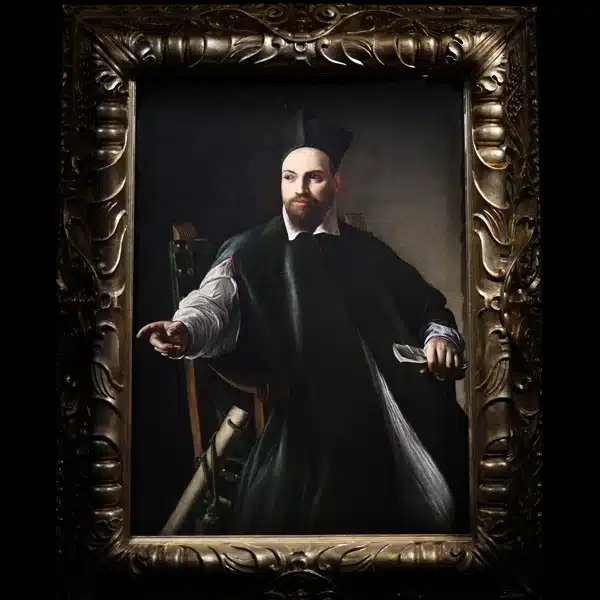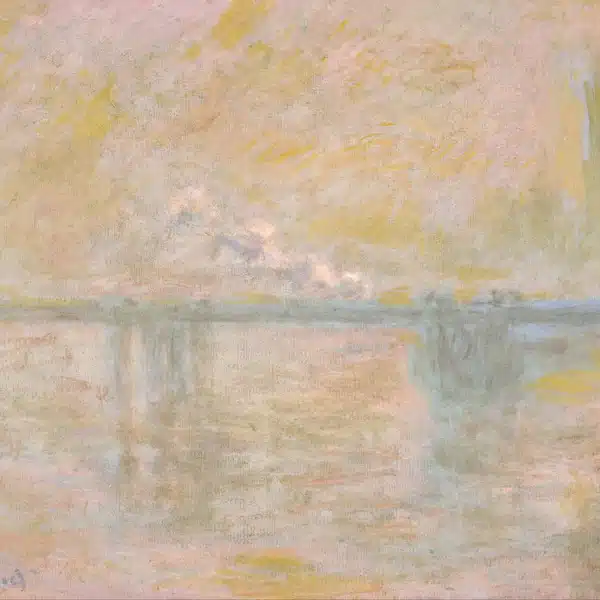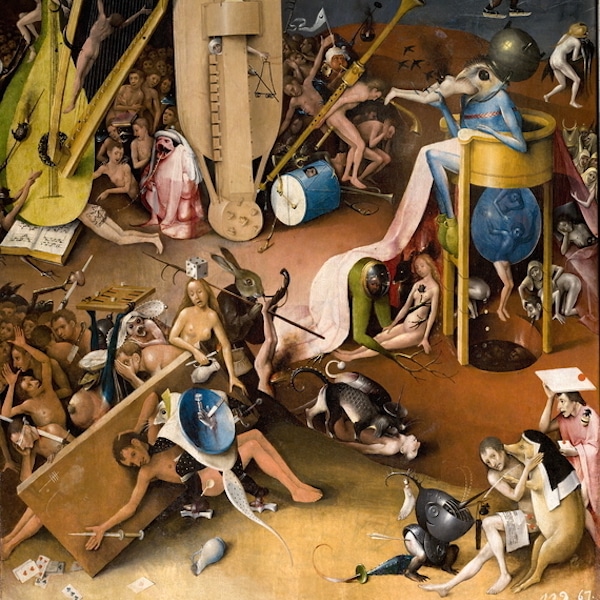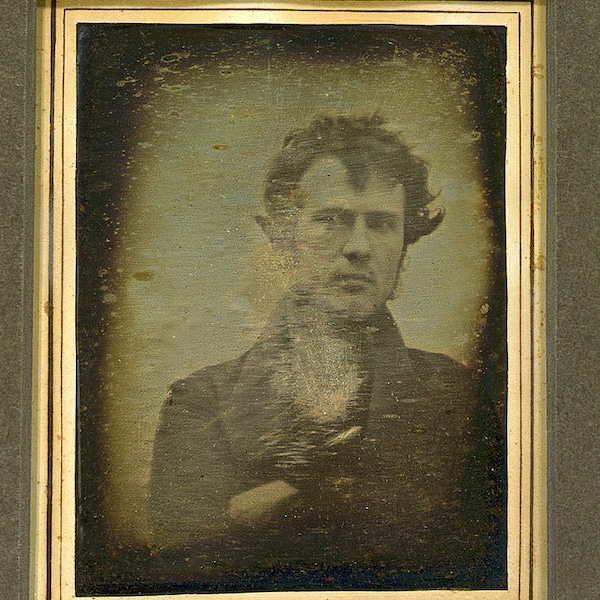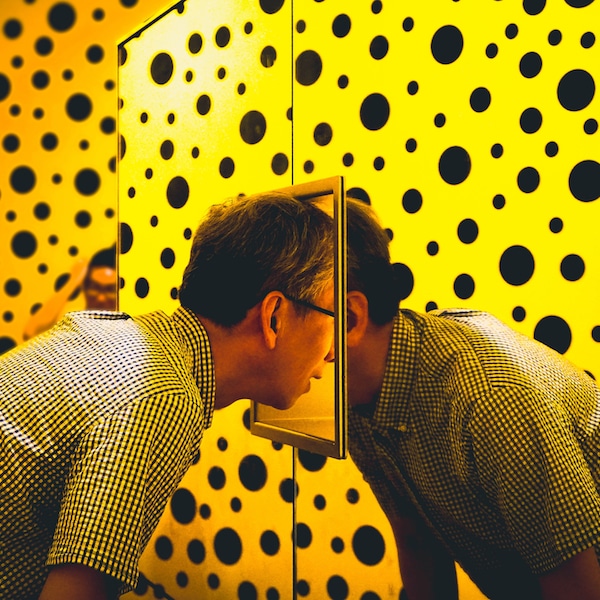Developed Style
Following the success of Sad Inheritance, Sorolla further developed this newfound style and choice of subject matter. For the next few years, he mostly produced paintings of seaside scenes washed in sunlight.
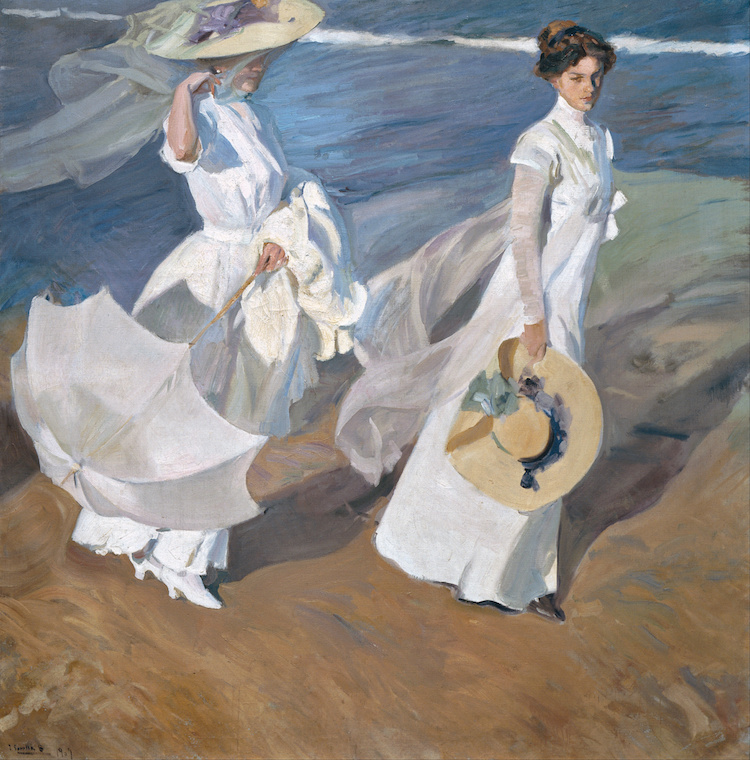
Joaquin Sorolla, “Walk on the Beach,” 1909 (Photo: Wikimedia Commons Public Domain)
Taking a cue from the French Impressionists, he painted en plein air, or “outdoors,” in order to render his subjects as authentically as possible. “As far as outdoor work is concerned, a studio is only a garage,” Sorolla said, “a place in which to store pictures and repair them, never a place in which to paint them.”
This process played a particularly important role in Sorolla's treatment of light. Much like Claude Monet, Soroll would work outdoors in order to experience and reproduce the effects of sunlight.
The light's characteristics would change according to season, time of day, and even setting. In some paintings, like Walk on the Beach, for example, his figures are bathed in bright, unobstructed beams of light; in others, including My Wife and Daughters in the Garden, dappled reflections imply sunlight streaming through foliage.
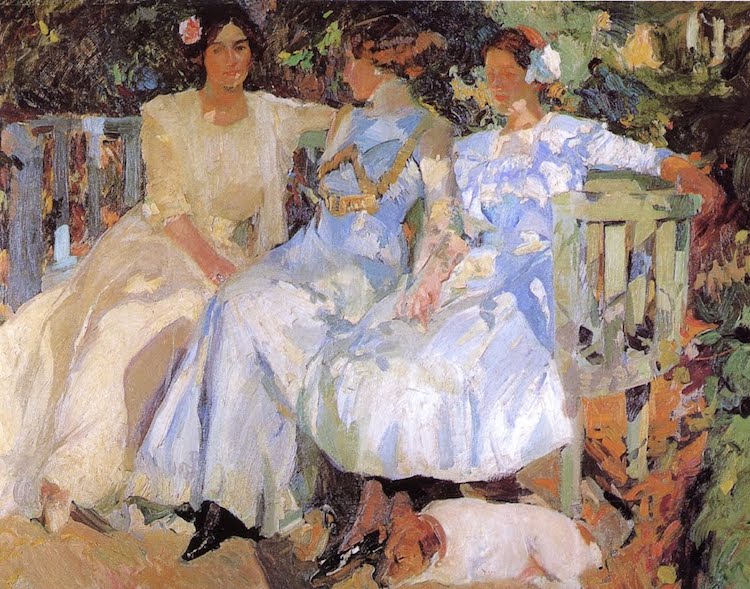
Joaquin Sorolla, “My Wife and Daughters in the Garden,” 1910 (Photo: Wikimedia Commons Public Domain)
In any case, it is clear that Sorolla adopted an Impressionist mindset during the height of his career, when he rejected art's formal rules and employed sunlight as his source of inspiration.
“Nature, the sun itself, produces color effects on this same principle, but instantaneously,” he said. “The impression of these evanescent visions is what we make desperate attempts to catch and fix by any means at hand. At such moments I am unconscious of materials, of style, of rules, of everything that intervenes between my perception and the object or idea perceived. No, mes amis, impressionism is not charlatanry, nor a formula, nor a school. I should say rather it is the bold resolve to throw all those things overboard.”
Late Work and Legacy
For the remainder of his career, Joaquín Sorolla continued to see success all over the world. In addition to Spain and France, his later work was welcomed in the United States, where he was commissioned to paint The Provinces of Spain, a still-standing series of murals in the Hispanic Society of America's building in Manhattan.
Even with such acclaim, Sorolla's legacy remained mostly confined to Spain in the years following his death. Fortunately, however, an appreciation for his work re-emerged at the turn-of-the-century, suggesting that the underrated artist may finally be considered a key Impressionist.
Related Articles:
California Impressionism: How American Artists Adapted French ‘Plein Air’ Painting
8 Iconic Artists and the Inspiration Behind Their Favorite Subjects
